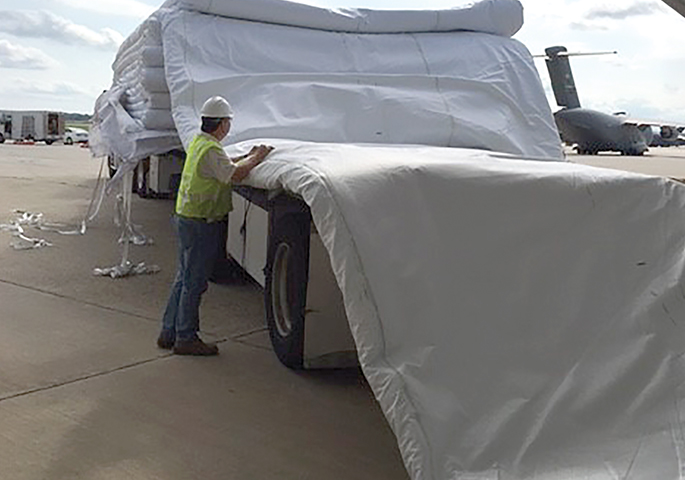August 2018 Vol. 73 No. 8
Rehabilitation
CUIRE Leads Research Team for Phase I of NASSCO CIPP Study

A four-month study on the review of published literature pertaining to chemical emissions of styrene-based resin used in the cured-in-place pipe (CIPP) process, found that existing studies do not adequately capture worker exposures or levels in the surrounding areas to which workers or citizens may be exposed.
The study was commissioned by the National Association of Sewer Service Companies (NASSCO) after a 2017 report suggested CIPP workers may be at risk to chemical air emissions exposure. The literature review is the first element in NASSCO’s effort to obtain factual information about any risks to workers.
The study started last December and completed April 6, 2018, by researchers at UTA/CUIRE and the Institute for Underground Infrastructure (IKT) in Germany. The team determined that spatial variation of concentrations, and variations in concentrations with different meteorological conditions, are not well-determined.
Most of the steam-cure studies captured temporal variation in emissions by measuring concentrations before, during and after curing. The studies were less complete in capturing spatial variation in concentrations, measuring styrene around the termination manhole, or inside the manhole or sewer pipe itself.
Maximum values at the outlet point and inside the terminal manhole ranged from 20 to 1,070 ppm — levels that exceed some exposure limits. However, since workers and certainly the public should not typically enter or stand directly at the termination manhole in the exhaust plume, this information is not very helpful.
At the steam-cured sites, additional field measurements of styrene concentrations surrounding the terminal manhole are needed. Only four of the steam-cure studies measured concentrations at least three feet away from the terminal manhole, versus in the manhole itself or in the exhaust plume.
On one project, employees walked the construction area periodically, but spent most of the time in their work trucks due to the cold weather. Hence, these measurements were likely not typical of worker exposures. Additional worker exposure data should be collected to capture variability in source emission rate, meteorological conditions, and the worker’s location with respect to the terminal manhole.
Atmospheric concentrations of compounds are functions of the source emission rate, meteorological conditions, and the receptor location. Since concentrations are expected to vary as a function of distance from the manhole, measuring at few locations gives an incomplete picture. In addition, concentrations are expected to vary with wind speed and direction, so one day’s measurements do not capture levels under differing meteorological conditions.
These earlier studies also do not adequately capture variations in emission rates from different kinds (different diameters, lengths, etc.) of pipes. The overall results of the project at UTA/CUIRE/IKT indicated that the 21 papers reviewed have questionable methodologies and, therefore, the results presented are not conclusive. The researchers recommended additional sampling, and data evaluation and analysis, as a second phase of this study.




Comments